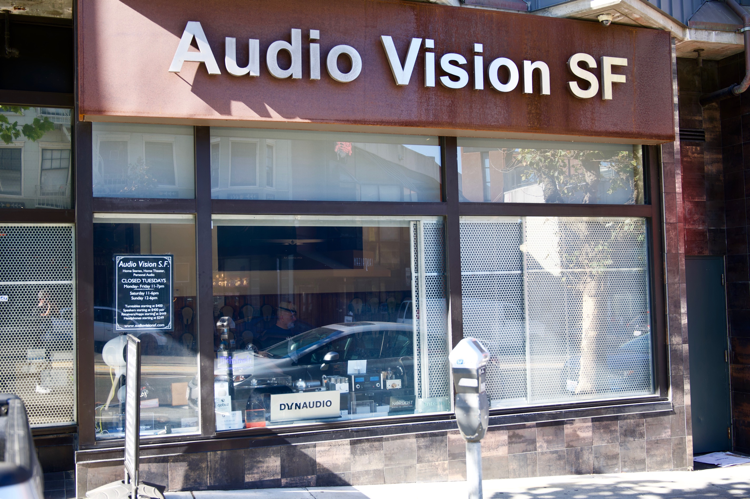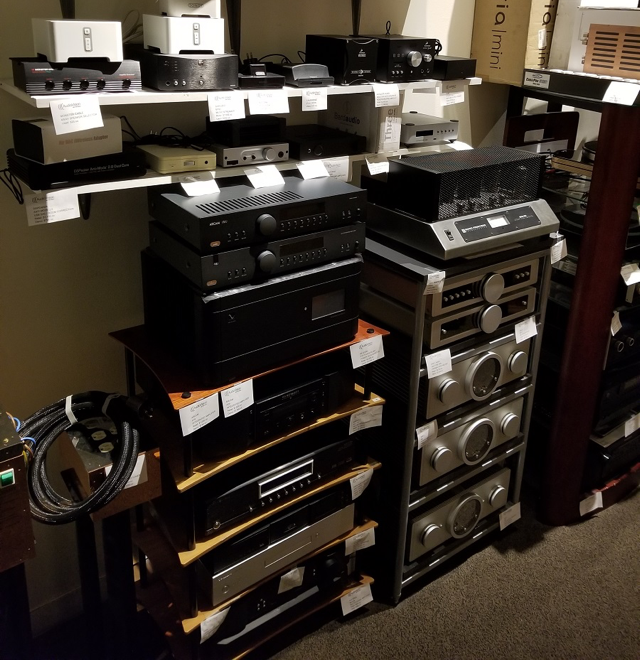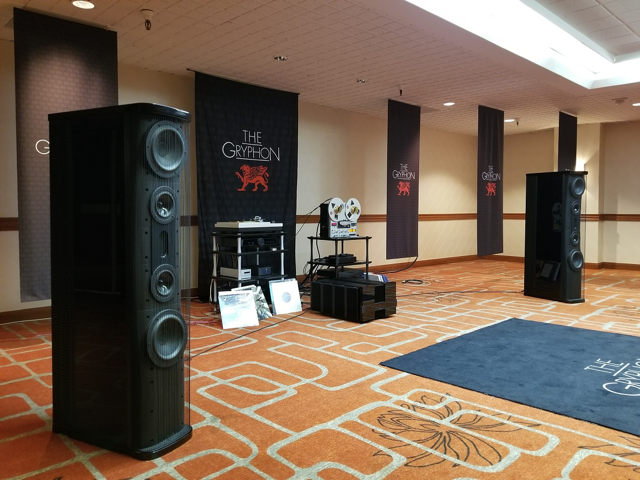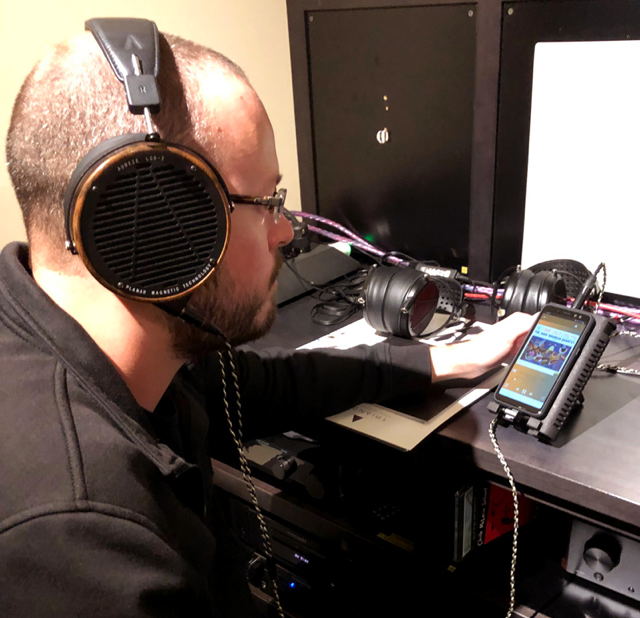
A few weeks ago on September 28th, I visited AudioVision SF to attend a celebration commemorating their 20th year of business in San Francisco. I’d never been to their retail store, so I wasn’t sure how large it was or exactly what kind of listening rooms they had on display. However, I had met Antonio Long, the store’s co-owner, in their room at the California Audio Show in July. He had a positive and welcoming attitude, and after chatting with him for a few minutes, I could immediately tell that he was deeply passionate about music and high-end audio.

The positive energy continued when my wife and I walked in the front door of their retail location on California Street. We were immediately greeted, asked if we wanted a cold drink, and encouraged to sign up for their raffle for a chance to win a complete Technics C700 stereo system. First impressions can make or break an experience, and I sincerely appreciated the gracious and courteous welcome.
Packed with speakers, headphones, source components, amplifiers, and even a small assortment of new vinyl records, I had a “kid in a candy store” moment as I gazed longingly at the gear I’ve only ever seen in Stereophile. The hallway, lined with tower speakers, lead to a floor-to-ceiling shelf filled with used components all in pristine condition with not a single speck of dust in sight.
A Little Listening Surprise

I picked my jaw up off the floor and moved into the first listening room. It featured a stunning pair of Focal Kanta N°1 bookshelf speakers ($5,999) in a matte gray front panel with walnut sides. They were connected to a Naim Uniti all-in-one player/integrated amplifier ($7,495), playing high-resolution music files from a USB thumb drive. The beryllium tweeters were projecting a crystal clear soundstage, while the flax fiber woofers were producing deep clean bass that belied the speakers’ small footprint.
Suddenly the music stopped and a gentleman stood next to the equipment rack and started plugging in power cables. I would come to find out later that this was Steve Greene from Nordost who was about to give us a demonstration of the company’s new QPoint Resonance Synchronizer ($749). He briefly explained how it’s designed to emit a field that causes devices in close proximity to synchronize in unison with each other at the exact same electromechanical resonance. One of these UFO-like objects was placed directly underneath the Naim Uniti, and he explained that what we just previously listened to was without the device plugged in. Now that it was plugged in, he restarted the same song so that we could make our own judgment on whether or not there was any difference or improvement.
Steve didn’t realize this, but I actually had launched my phone’s calibrated decibel meter app when the song was played for the first time. This second time, the meter showed the bass energy creating higher db peaks by 1-2db, despite the volume level on the Naim being set exactly the same as it was previously. I also noticed that the soundstage had grown vertically and that the sound was less localized to the physical speakers themselves. The most intriguing difference was the sound’s airy and ethereal quality, with more delicacy and nuance in the singer’s voice. I didn’t really want to believe that putting a spooky UFO-like disc under a component could make this sort of a difference, but I walked away wanting to try this product in my own system.
The Gryphon System and Abbey Road

Next, we walked across the street to the Holiday Inn where AudioVision had rented out a large ballroom and set up a world-class system like you’d see at any large audio show. The jet-black monolithic Gryphon Audio Pantheon speakers ($52,000) were hard to miss. Equally visually impressive was the 238-pound Gryphon Mephisto power amplifier ($61,000), controlled by the Gryphon Pandora preamp ($32,500). The newly remastered Super Deluxe Edition of The Beatles’ Abbey Road was spinning on the Technics SL-1000R turntable ($20,000).
I knew AudioVision was going to be prominently featuring the new remaster of Abbey Road at this event, so I listened to it the night before on my own system via Qobuz to get a taste of what I would hear at the event. In reality, it turns out that nothing could have prepared me for what The Beatles sounded like on this megabucks system. It simply sounded real. Instruments came to life with accurate scale and force, while vocals came from dead center, directly between the speakers. I loved the sensation of John Lennon’s voice projected perfectly upfront and center during “I Want You (She’s So Heavy)”. It really seemed as if he was standing in the room.
After listening to the remastered version, Philip O’Hanlon from On a Higher Note (Gryphon’s North American distributor) pulled out a $900 copy of the original UK pressing of Abbey Road and queued up “I Want You” to compare the two versions. This time the instruments sounded like they were more blended together, but as a result, it had the feel of a live performance. The drums and percussion were prominently highlighted, versus how the vocals were showcased on the remastered version. The overall flow and rhythm were different. This original version seemed to convey more emotion, specifically the utter desperation in Lennon’s voice. I liked the cohesive sound and rhythmic flow of the original pressing, but I also admired the pristine clarity and accuracy of the remastered version. Clearly, they are both worth owning on vinyl!
TRIANGLE Speakers

Heading back to AudioVision we went into the second listening room where Frank Gazzo from TRIANGLE speakers was spinning some of his favorite records on an SME Model 15 turntable ($12,900). The rest of the system consisted of the TRIANGLE Magellan Cello tower speakers ($13,500). The electronics were a full array of equipment from Chord including two Étude stereo power amplifiers running in bridged mono mode ($4,200/each), the CPA 5000 preamp ($13,700), and a Symphonic MC phono preamp ($4,995).
Versatility was the name of the game with this system. It seemed like no matter how esoteric or unusual, the music that Frank played was all rendered with striking clarity and speed. The horn-loaded tweeters of the TRIANGLE speakers have a forward presentation, but this gives the music an immediacy that reminds me of how live music sounds. I enjoyed what I heard of the TRIANGLE house sound, and I’ll be reviewing a pair of the company’s Esprit Comète Ez speakers ($1,400) soon.
Listening to Some Cans

AudioVision also has strong interest in headphones with an entire room dedicated to high-end cans. Chris Berens of Audeze and Mike Liang of Woo Audio were onsite showcasing their company’s newest products. Chris gave me a demonstration of Audeze’s lineup of planar magnetic headphones powered by the Woo Audio WA11 Topaz headphone amplifier/DAC ($1,399). Somewhat surprisingly, my favorite wasn’t the company’s highest-priced headphones, but the LCD-3 model ($1,945) connected with the optional LCD-4 Premium Braided Cable ($599).
Just under $4,000 for a headphone setup might seem like a lot, but I think the price to performance ratio is spot-on and here’s why. When I listened to The Dave Brubeck Quartet’s classic “Take Five”, there was an expansive soundstage. Each performer had space around their instrument and I could close my eyes and visually picture where they were standing during the recording. The texture, tone, and nuance of the sound delivered spectacular realism and transported me to another time and place.
When I took off the headphones and had a conversation with Chris and Mike, their voices in the room sounded less real than what I had just heard through the LCD-3 headphones. It was a stunning experience and one that I thought about for several days after, sharing my enthusiasm with anyone who would listen when I couldn’t stop talking about “these amazing two thousand dollar headphones” that I heard. To say I was impressed is putting it lightly, and I sincerely hope I can get a pair of Audeze headphones in for review so I can spend more time with them.
Audeze doesn’t just make large over-ear headphones. They’ve also incorporated planar magnetic technology with in-ear monitors. While I was demoing the full-sized models, my wife started looking at their IEMs. In the past, she hasn’t found an in-ear monitor that performed up to her expectations. When she told this to Chris, he replied, “Challenge accepted!” and handed her the LCDi3 ($899) to listen to. Plugging them into her old iPod Touch, within seconds she exclaimed loudly, “Sold!” She enjoyed the Audeze experience so much that after visiting their website for a few days she ordered the iSine10 ($349). I think it’s commendable that Audeze’s house sound is still clearly audible even in their lower-priced models.
Overall, the AVSF anniversary celebration was a perfectly executed event with demos of a robust selection of equipment. I appreciated how both moderate and higher-priced systems were featured. I’m sure whatever your particular taste and budget, AudioVision has the skill and equipment on-hand to put together a system that will be sure to satisfy. And, if you haven’t read it yet, you can find out more about AudioVision SF in this post from Jack from a few weeks ago.

